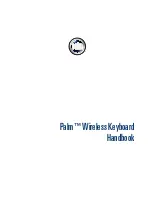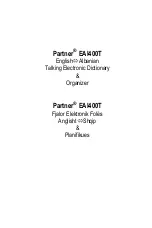
Program Mode and the Program Editor
The Program Editor—Pages
6-28
The parameters and values in the following list apply to
each
of the three envelope sectionsÑ
attack, decay, and release. WeÕll describe them only once, since their functions are largely the
same for each envelope section. The only difference is with velocity tracking, which is hard-
wired to control only the attack sections of the envelopes (you can assign attack velocity as the
value for the Source parameter in each of the sections, however).
The values of each of these parameters multiply the
rates
of the envelope sections they control.
Values greater than 1.000x make the envelope sections run
faster
(they
increase
the rate), while
values less than 1.000x make the envelope sections run
slower
. Say for example that on the
current layerÕs AMPENV page you had set the Decay sectionÕs time at 2.00 seconds, and its
level at 0%. This sets the layerÕs amplitude to fade to silence two seconds after the completion
of the last attack segment. The decay
time
is two seconds; the decay
rate
is 50% per second.
Now if you select the ENVCTL page and set the Decay Adjust parameter to a value of 2.000x,
youÕve increased the decay
rate
by a factor of two. The rate increases to 100% per second, and
the decay time is now one second instead of two.
PARAMETER
RANGE OF VALUES
(Att, Dec, Rel)
ADJUST
0.018 to 50.000x
KEY TRACKING
0.018 to 50.000x
VELOCITY TRACKING
0.018 to 50.000x
SOURCE
Control Source list
DEPTH
0.018 to 50.000x
Adjust
This is the familiar Coarse adjust found on many other pages. Use it here to change the rate of
one of the envelope sections without reprogramming the envelope itself. This parameter
doesnÕt give you realtime control over the envelope. It is, however, a good way to adjust the
natural envelopes without switching to a User envelope and trying to approximate the Natural
envelope.
Key Tracking
This uses the MIDI note number of each key as the control input for the current layerÕs
corresponding envelope section. When the value of this parameter is greater than 1.000x, notes
above C 4 will make the envelope section run faster, while notes below C 4 will make it run
slower. When the value of this parameter is less than 1.000x, notes above C 4 will make the
envelope section run slower, and notes below C 4 will make it run faster. This gives you
realtime envelope control right from your MIDI controller. You might use it, for example, to
cause an acoustic guitar sound to decay quicker at the high end (set the key tracking to a
positive value).
Velocity Tracking
Use your attack velocity as the control input for the current layerÕs attack section (this
parameter doesnÕt apply to decay or release). When the value of this parameter is greater than
1.000x, attack velocities greater than 64 make the attack section run faster, and attack velocities
below 64 make it run slower. This gives you realtime attack control over the envelope.
Source, Depth
These two parameters work together to let you assign a control like the Mod Wheel to affect the
current layerÕs envelopes in realtime. The value of the Source parameter deÞnes which control
affects the envelope section, and the value of the Depth parameter deÞnes how much the rate is
multiplied when the control is at its maximum.
Summary of Contents for K2500RS
Page 12: ...Table of Contents TOC 12...
Page 16: ...Introduction How to use this manual 1 4...
Page 32: ...User Interface Basics The Panel Play Feature K2vxR 3 8...
Page 106: ...Effects Mode and the Effects Editor Configurations and Parameters 9 24...
Page 186: ...Song Mode Recording Multi timbral Sequences via MIDI 12 52...
Page 304: ...DSP Functions Hard Sync Functions 14 52...
Page 394: ...Programs Setups and Keymaps K2500 ROM Keymaps 21 12...
Page 402: ...LFOs LFO Shapes 23 4...
Page 406: ...Note Numbers and Intonation Tables List and Description of Intonation Tables 24 4...
Page 434: ...DSP Algorithms 26 14...
Page 450: ...MIDI and SCSI Sample Dumps SMDI Sample Transfers 29 8...
Page 464: ...Glossary 31 6...
Page 490: ...K2vx Program Farm VOX K25 Appendix A 22...
Page 494: ...K2vx Compatibility Converting programs from the K2vx to K2000 Appendix B 4...
















































